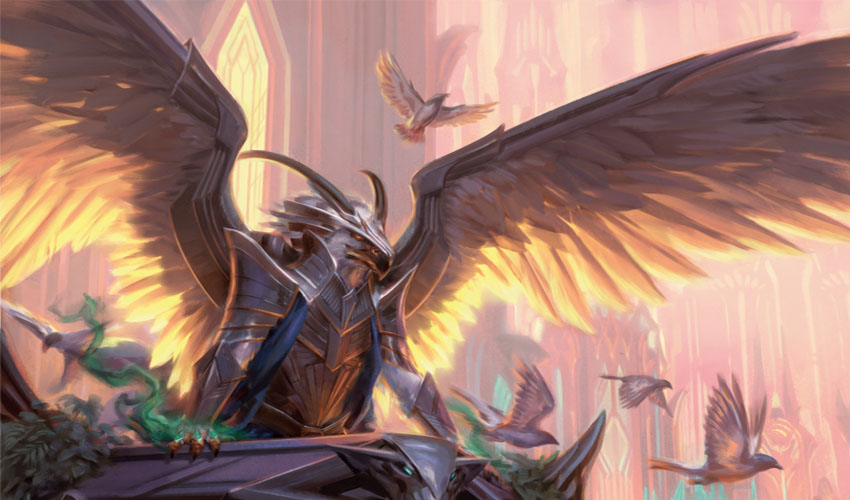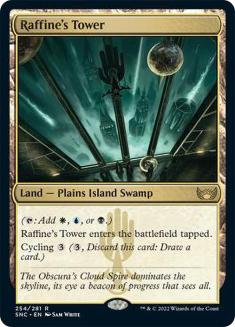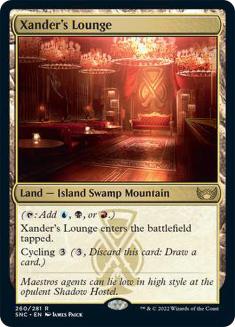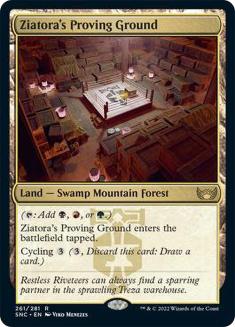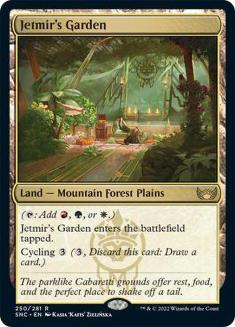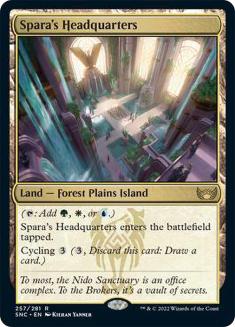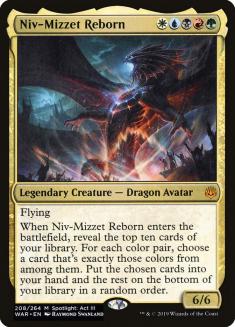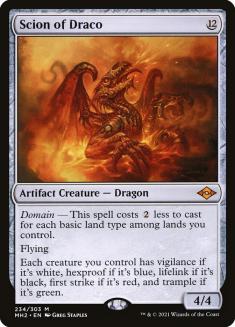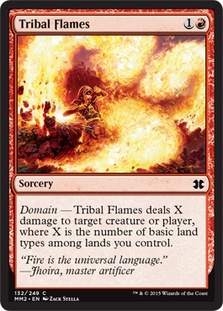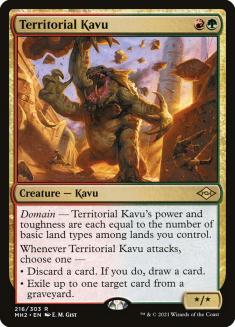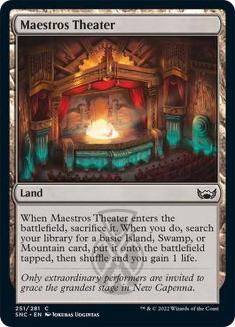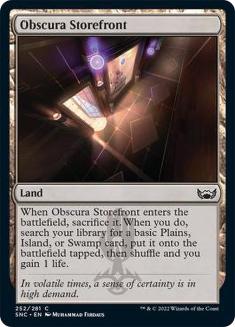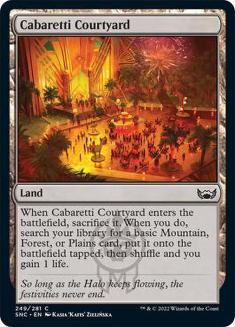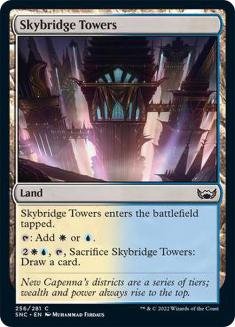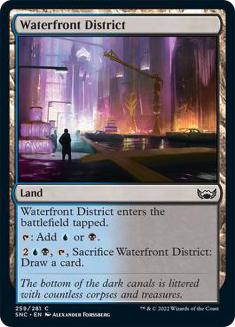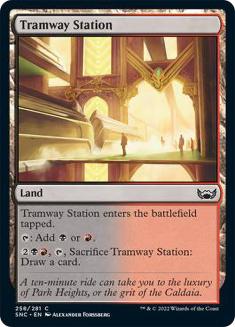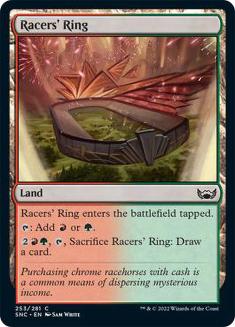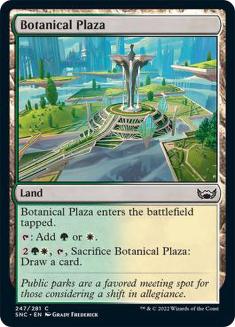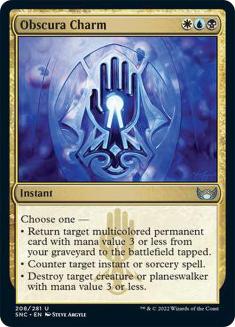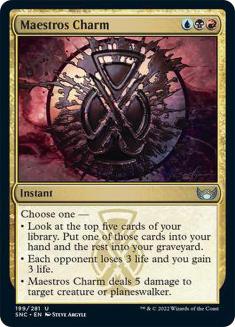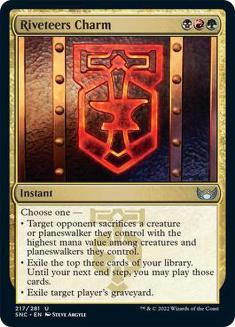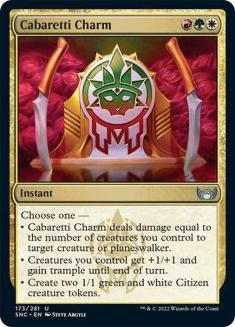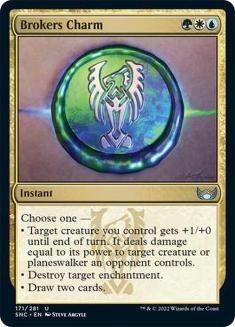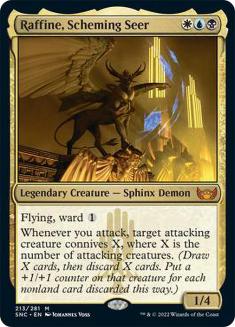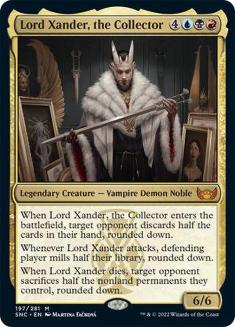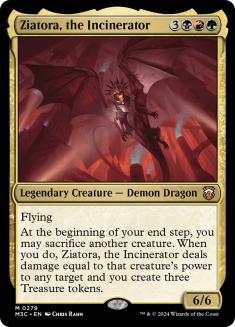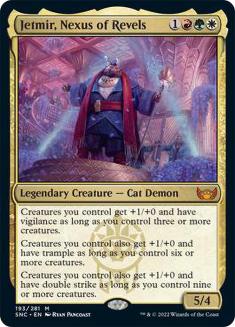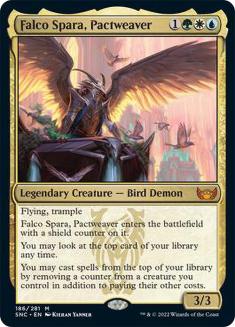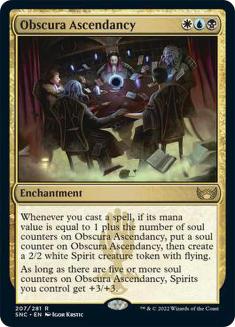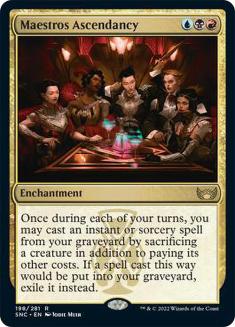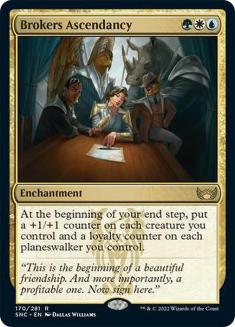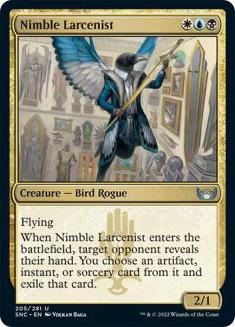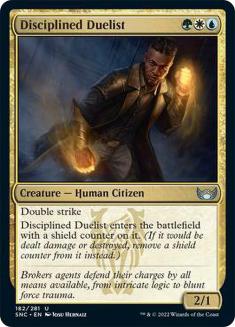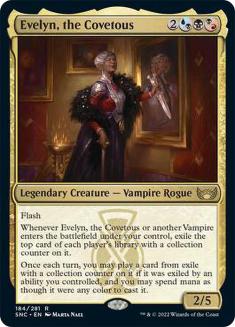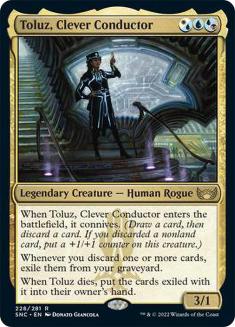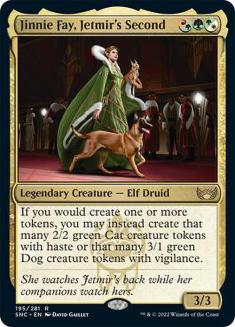I was very excited when Streets of New Capenna was first announced. Well, maybe not specifically for Streets of New Capenna and its mobster aesthetic, but rather to see another set focusing on the allied three-color sets. Shards of Alara released all the way back in 2008, and the enemy three-color sets in Tarkir block as well as Ikoria all eclipse Shards block on power level. Grixis and the other shards are overdue for some love!
We don’t have the full preview for Streets of New Capenna just yet, but we’ve seen enough of the file to get a strong idea of what’s going on here. There are some powerful cards in the set, though on balance it looks toned down quite a bit from the high power level of Ikoria. A comparison to Khans of Tarkir would be closer, but it’s a little early to make the call on which set will end up having a higher power level.
Regardless of where the set’s exact power level lies, it offers Cube designers some food for thought on a fundamental level. There are some standouts that I’m eyeing for my Top 10 Cube cards for the set, but today I’ll look at the more broad-strokes impact of Magic’s first allied three-color set in almost fifteen years. Let’s talk about designing Cubes with three-color cards and lands in mind, and the incentives and pitfalls of each.
Three-Color Lands
It makes sense to start this discussion with the completion of the Triome cycle, given that these will in all likelihood be the most impactful Cube cards from Streets of New Capenna. Lands just have a leg up on spells in this department, and Triomes already have a significant following, having proven their power in multiple formats.
Personally, I’m colder on Triomes than most, but I do believe that they invite an important conversation on incentives. During a discussion with Justin Parnell on The 540, I once mentioned how trilands make you feel like you’re leaving something on the table if you’re only playing two or three colors. Technically, if you’re playing the correct three colors, they’re doing their job, but that’s only a surface-level analysis.
Three-Color Lands, Two-Color Decks
Let’s start with how three-color lands play in two-color decks, though. They’re totally fine, but trilands and Triomes enter the battlefield tapped and will be worse than almost any appropriate two-color land due to the fact that the alternative two-color land will have some ability to enter the battlefield untapped or offer some other benefit. This is to say that three-color lands work in a pinch for two-color decks, but you’ll never play them in the best versions of these decks.
When you have the Xander’s Lounge for your Grixis deck, it feels pretty nice. If you have some fetchlands to find it, then you’ve really got yourself a stew going! The issue is that you have to find the correct Triome for your three-color set. Beyond that, it’s not all that difficult to build a three-color manabase using only two-color lands, and it won’t always be the case that a three-color player finds their corresponding Triome. This is all fairly minor, but it’s evidence that if your goals for your Cube involve players generally playing one to three colors, then Triomes won’t add tremendous value.
Four or More Colors
Where Triomes are excellent is in decks playing four or five colors. It is comparatively very difficult to build four- and five-color manabases using only two-color lands. Fetches and duals go a long way in making this work, but the ease of access provided by Triomes is a huge deal for these decks.
Don’t take this as me saying that the mere inclusion of Triomes makes four- and five-color decks easy and boring, but rather that Triomes incentivize four- and five-color decks more than almost any other land and fit in these decks much better than they do in decks of three or fewer colors. There’s also the simple numbers game that eight drafters and ten Triomes break down in a way that players will have the ability to draft multiple Triomes with some regularity, which again incentivizes playing four or five colors, not three.
As such, it logically follows that Triomes fit best in either color-restricted Cubes or Cubes designed with the idea of four- and five-color decks being readily draftable. People raised a stink when Niv-Mizzet Reborn was removed from the Magic Online (MTGO) Vintage Cube, so I’m sure that Cubes like this are quite common and popular.
An idea that I have kicking around in my head is a Domain Twobert with a high volume of gold cards, and the completion of the Triome cycle does a lot for that sort of environment. That Cube would have a goal of players regularly playing four or five colors, and Triomes offer all the right incentives for that sort of thing.
The Common Search Cycle
There also looks to be a common three-color land cycle in Streets of New Capenna, and I find it very intriguing for Pauper Cubes. At the time of this writing I only see Maestros Theater in the file [Copy Editor’s Note: Obscura Storefront and Cabaretti Courtyard have since had official previews], but I’d be very surprised if we didn’t get all five of these:
I’ve seen some players pan these as worse than Evolving Wilds, which makes it clear that those players never played any Limited formats with taplands that gain life. That small life buffer makes it that much more difficult for aggressive decks to cross the finish line, and a lot of games in Pauper Cubes are closed in combat. The most significant downside of these lands is that there won’t be a cycle of all ten of them, but I do see them as very serious Pauper Cube considerations, and if I still maintained my Pauper Cube, I’d be picking up a foil set of them.
The Common Draw Cycle
Realistically, this cycle of two-color lands will grace more Pauper Cubes than the three-color options. It’s easier for these lands to find the decks that they will play best in, and they form sort of a complete cycle with the Strixhaven Campuses.
Three-Color Gold Cards
Naturally, three-color sets come with an influx of three-color gold cards. In generally we see very few cards with three or more colors in the digital Cubes, and this is consistent with my personal designs as well. Even one-time Constructed all-stars like Siege Rhino just don’t offer a lot to most Cubes. Once again, this is a matter of incentives.
The bar for three-color cards is much higher than the bar for three-color lands. Even if a Triome is weak in your Boros deck, you can still play it if you really need it. Three-color cards require you to be playing at least all three of their colors, and that’s a much bigger ask than having a land enter the battlefield tapped. That’s why for the most part we only see tremendously powerful three-color cards like Leovold, Emissary of Trest in high-power Cubes.
There are some very cool three-color cards in Streets of New Capenna, with a full cycle of Charms and legendary Demons to consider. There’s some flexibility and power in these cycles, and I’m sure that they’ll see some amount of Cube play.
The Charms
When I maintained my Spooky Cube as one 360-card Cube I had one gold card for every three-color set and I found that this worked well in a Cube with a high volume of mana-fixing lands provided that these gold cards played into the themes of the Cube. The Charms are a bit weak and demanding for a lot of Cubes, but I can see them being very fun to have around in Cubes with a lot of manafixing and gold cards. The flexibility that they offer makes the juice worth the squeeze if you’re interested in incentivizing three or more color decks.
The Legendary Demons
The legendary Demon cycle does a great job of representing each family, and I’d expect to see them at the very least in the appropriate color-restricted Cubes. Raffine and Ziatora and the standouts for me there, with Raffine being a somewhat difficult-to-kill source of card filtering and Ziatora offering some pretty real value, even if six mana is a steep cost.
The Ascendancies
We’re also seeing a new cycle of Ascendancies, and all of them seem to be slow-burning value cards. In general, these won’t be huge draws to three- or more-color decks in Cube, and will be reserved for Cubes of more modest power levels. The effects are cool; they’re just more cool than powerful. Something like a Commander Cube would also provide a great home for cards of this nature.
Individual Cards
On the other side of the coin are cards like Nimble Larcenist. This card is a fine design, but from a general Cube perspective it makes me sad. Is it meaningfully better than Sin Collector? Doubtful, but it sure is more difficult to cast. That’s the real risk of three-color cards. If they’re not more appealing than two- or even mono-color options, then they’ll generally detract more from your Cube than they add.
Disciplined Duelist is closer to what I like to see from three-color cards. It likely can’t hang in Cubes without a rarity restriction, but there’s some power here that could be desirable for a Peasant Cube. Maybe you like Armadillo Cloak, but find games with hexproof creatures bland and predictable. The point is that this card offers something somewhat powerful and unique, whereas Nimble Larcenist is more a pile of stats that doesn’t really do anything unique or appealing.
Ultimately, three-color cards will shine much brighter in color-restricted Cubes, and will show up in very small numbers if at all in more traditional Cube environments. Once a card costs three mana, there are tons of powerful options, and it’s not always easy to play three or more colors. There is a cycle in Streets of New Capenna that I believe does a very good job of addressing this, though.
Three-Color Hybrid Cards
Evelyn, the Covetous; Toluz, Clever Conductor; and Jinnie Fay, Jetmir’s Second are examples of three-color cards that I love. I would assume that this will be a cycle and each family will get its own card that is castable with access to one, two, or three colors of mana.
The power level isn’t all that high, so I like the design more than the execution, but these cards are very flexible with regard to how many colors they ask you to play. Realistically, I like them best if you’re supporting a devotion theme, but what’s cool about them is they play about equally well in one-, two-, or three color decks. Triomes invite you to push the limits on how many colors you want to play, and fully gold cards impose strict requirements, but this implementation of hybrid mana offers simultaneous support for mono-color and multicolor decks. The incentives are more flexible, which to me makes them more desirable.
The Breakdown
Evelyn is probably more of a Grixis Cube card than a general Cube card at the printed power level, and for that reason I would love to see more cards printed with this implementation of hybrid mana. I’m really wishing Jinnie Fay gave you an additional token, given that the card generates no value on its own, but hasting up 2/2s instead of making 1/1s will be relevant for a lot of token makers in a lot of Cubes. Jinnie Fay also lets you make creatures in place of treasures and other non-creatures, so it’s likely more worth exploring than it looks on first read. Realistically, I can’t see them printing very many cards of this nature given that the casting cost does read oddly, but I love it and I hope that these are popular enough that the concept is revisited later.
For the most part, three-color sets ultimately contribute most to Cubes in terms of their lands and mono-color cards. Streets of New Capenna easily delivers on the lands front, and while I do like a number of the three-color designs, this is likely to be the case here as well. All the same, I’m excited to see the rest of the set and get to work on my Top 10 article. Who knows, maybe some spectacular gold card will surprise me and make the grade!

